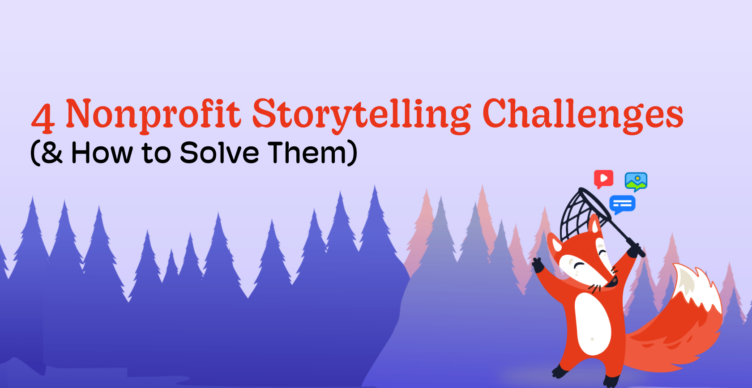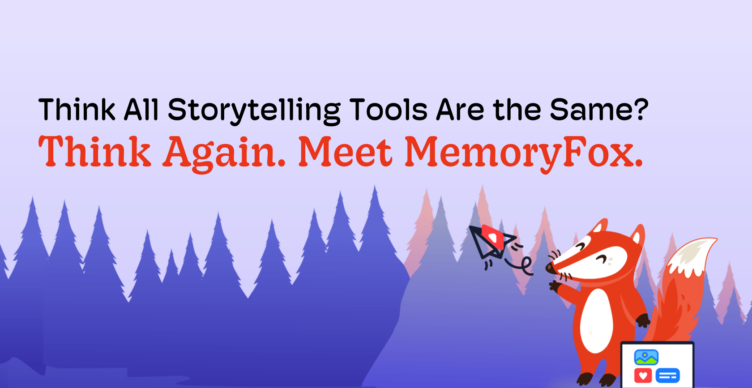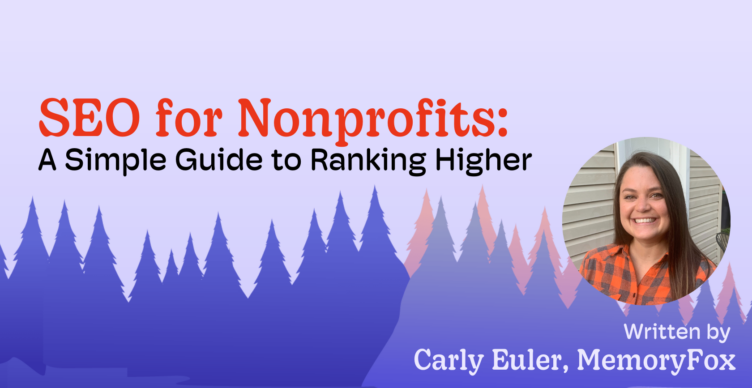Community Building, Ethical Storytelling
Changing The Narrative: 3 Steps to Get Stakeholders On Board
Storytelling is the number one way to bring your mission to life and connect with donors on a human level. Every great story that has moved people to action has one thing in common – it elicited emotion. However, within this landscape, there exists a perilous trap: poverty porn.
What is Nonprofit “Poverty Porn”?
“Poverty porn” is a term that refers to the sensationalization of poverty to evoke pity or guilt, which often reduces the individuals your nonprofit serves to mere objects of pity, stripping them of dignity and agency. When making a commitment to ethical storytelling, changing the way you write these narratives is often the first major shift. However, it can be challenging to get everyone at your organization on the same page: board members, staff, volunteers, donors and beyond.
In the post, we’ll explore the three steps to pivot your nonprofit storytelling from poverty porn to strength-based messaging. These steps have been synthesized from the 2023 Ethical Storytelling Report, which includes the perspectives of 20+ storytelling experts and boots-on-the-ground nonprofit professionals.
When asked: What do you recommend to say to stakeholders who request “poverty porn”-style stories?, we received thoughtful answers from Megan Donahue, Christina Tzavaras Edwards, Erika Spence and Jordana Merkin. Let’s dig in to their recommendations, broken down into a three step plan:
Step 1: Have Tough Conversations & Be Prepared to Give Grace
“For a long time, “poverty porn”-style was VERY common, so it’s often a case of people really, truly, not knowing that this style is unethical. I recommend emphasizing that the people whose stories we’re sharing are individuals & focusing on their comfort & dignity. You may not need to launch into a whole diatribe about ethical storytelling, it might be as simple as saying, “I want to make sure John feels good about this story & that we protect his dignity.” In other cases, you may find it worthwhile to explain what “poverty porn” is, and why you need to avoid it.” – Megan Donahue
The concept of poverty porn is not a new one, and has been the nonprofit storytelling norm for many years. While it may feel uncomfortable, the first step of shifting the way narratives are presented is to have tough conversations as a group and make a conscious decision to say: even if we’ve done this in the past, we will not do this moving forward.
As suggested, you can start by sharing the definition. Wikipedia defines poverty porn as “any type of media, be it written, photographed or filmed, which exploits the poor’s condition in order to generate the necessary sympathy for increasing charitable donations or support for a given cause.”
The simple fact is that organizations, and the people running them, cannot make a change without first educating themselves. If you continue to receive push-back, challenge your stakeholders to picture themselves or a loved one as the main “character” of the poverty porn-style story. Ask them: How would it make you feel to see YOUR life written in this way? With tough conversations like these, the hardest part can often be getting started. Afterward, you, and your stakeholders, will likely feel relieved and empowered.
Step 2: Make a Communications Plan & Gather Buy-In
“Stakeholders need a Brand and Story Standards Guide from leadership. This may include clear changes in content & messaging from previous years. This should define what poverty-porn is, why it doesn’t align with the org’s values, and a more effective, ethical way to tell stories that captivate. From there, it may require 1-on-1 conversations with stakeholders who may need more coaching, support, or clarity on the new standards.” – Christina Tzavaras Edwards
 When implementing a language shift at an organization, it is essential to provide guidelines for the future and to ensure that all stakeholders have input and are on the same page. Crafting your new communications plan can include:
When implementing a language shift at an organization, it is essential to provide guidelines for the future and to ensure that all stakeholders have input and are on the same page. Crafting your new communications plan can include:
- Deficit-based keyphrases to avoid moving forward and remove from current communications
- Strength-based terms to use as replacements
- Specific mission-focused examples
- Guidelines for grant writing, social media posts, email communications, etc.
- Examples from organizations that you aspire to imitate
- Exercises to practice using the new language
- A commitment to reevaluate the document regularly
- Signatures of staff members and stakeholders who have read and support the document
Step 3: Build Community & Raise More Funds
“A donor once told me he didn’t want to see any more bloody whales. I don’t work for an animal welfare organization, but I knew what he meant. He didn’t want to receive the stories or pictures of misery, hopelessness, or despair. What he wanted were stories of impact…” – Erika Spence
“Not only do “poverty porn”-style stories tend to be unethical, they are also not what your audience wants to see. You want to share stories that make people want to see more. Poverty porn makes them turn away. In telling ethical stories, you establish trust and build a relationship with the right people for your mission. While poverty porn may yield some quick donations out of guilt, it won’t result in long-term relationships built on trust and shared values. Ultimately your people want to know they are partnering with you on the solution, and poverty porn only focuses on the problem. Ethical storytelling not only benefits those you serve, but better serves your organization as well.” – Jordana Merkin
The key to the long-term sustainability of your nonprofit is building a community of donors who see themselves as part of the ultimate solution. While poverty porn may secure quick donations, these types of stories do not draw donors into a relationship with your mission that will last. Ultimately, a commitment to ethical storytelling is an effective donor stewardship tactic because retaining current donors costs less than prospecting and converting new donors.
At MemoryFox, we recognize that, while essential, implementing ethical storytelling practices is not always easy. We commend you for making this commitment, and we hope to assist you in this process. Following these three steps is sure to take you on the right path to avoiding poverty porn and crafting stories of hope for the future.
Here are additional ways you can stay informed about ethical storytelling practices for the nonprofit space:
- WATCH: Narratives With Integrity panel recordings: December 2023 and March 2024
- SAVE THE DATE: Our next Narratives With Integrity panel will take place Tuesday, June 11th at 3 pm ET / 12 pm PT
- Join the Narratives With Integrity LinkedIn Group to keep the conversation going
- Download the 2023 Ethical Storytelling Report

About the Author
Carly Euler
Marketing Manager, MemoryFox
Carly comes from the nonprofit world ready to elevate the hundreds of nonprofits in the MemoryFox community. She currently serves as the Co-Chair of the Wily Network’s Young Professionals Association, and has previously held positions at the Breast Cancer Coalition of Rochester, the Code of Support Foundation, Kenya Lacrosse Association, and the BOMA Project, where she has specialized in marketing, communications, and fundraising. Storytelling has been an integral part of each role.




